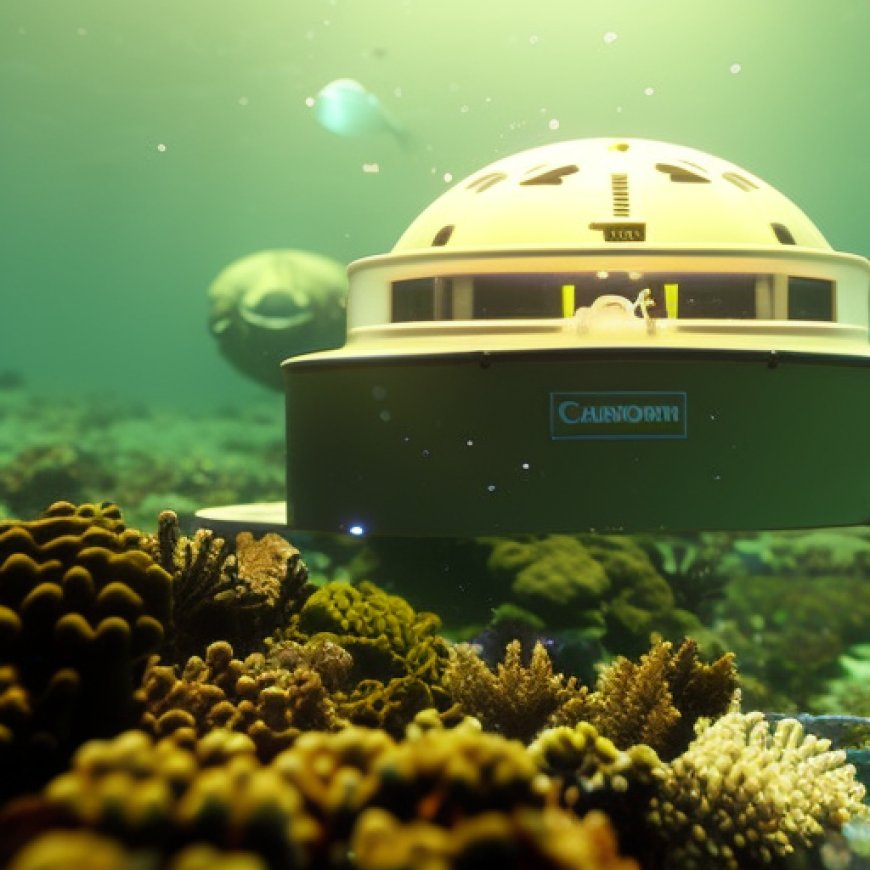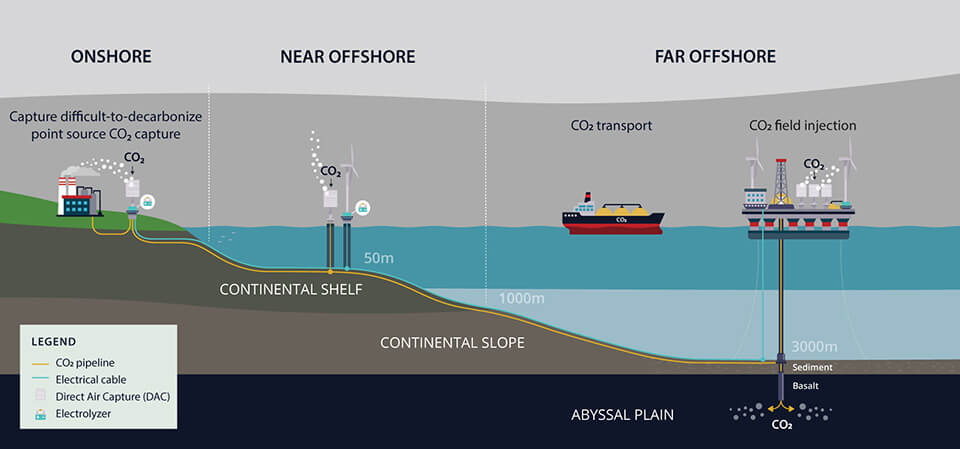Storing carbon safely under the sea, new study – University of Victoria
Storing carbon safely under the sea, new study University of Victoria


Injecting Carbon Dioxide into Ocean Basalt Poses Minimal Seismic Risk, New Research Shows
Advanced computer modelling conducted by the Solid Carbon team has revealed that injecting carbon dioxide (CO2) into ocean basalt carries a negligible risk of triggering seismic activity such as earthquakes or fault slip. Solid Carbon, a climate change mitigation project aimed at reducing atmospheric carbon levels, is investigating the permanent and safe storage of CO2 beneath the ocean floor. The project, led by Ocean Networks Canada (ONC) and funded by the Pacific Institute for Climate Solutions, aims to capture CO2 from the atmosphere and inject it into young porous basalt rock found in the Cascadia Basin off the west coast of Canada. This process would result in the transformation of CO2 into carbonate rock through interaction with minerals.

Low Seismic Risk Confirmed by Geophysical Modelling
A recent article published in the international journal GeoHazards, titled “Fault Slip Tendency Analysis for a Deep-Sea Basalt CO2 Injection in the Cascadia Basin,” presents the findings of geophysicist Eneanwan Ekpo Johnson and her research team. The study concludes that the potential for fault slip resulting from carbon sequestration is less than 0.01. The research indicates that injecting up to 2.5 megatons of CO2 per year over a 10-year period at the study site carries an extremely low risk of seismic activity. Scaling up this technology to other ocean basalt sites could allow for the safe injection of approximately 10 gigatons of CO2 per year by 2050, which would contribute significantly to the necessary atmospheric reductions required for sustainable habitation.
The research team, consisting of scientists from ONC, the University of Victoria’s School of Earth and Ocean Sciences (SEOS), and Natural Resources Canada (NRCan), analyzed the geology and available data from the Cascadia Basin, including fault locations and orientations, as well as stress levels in the area. The team determined that the low seismic risk is due to the basalt rock not being over-pressured and having ample pore space to accommodate the injected CO2. Additionally, the rock is permeable enough to facilitate the spread of carbon throughout.
“The question about the risk of pumping CO2 into the ocean crust is important. People on the west coast can have concerns when they hear that the CO2 will be injected under pressure into an area where there are natural earthquakes due to tectonic stresses. These results show that an additional risk is practically non-existent.”
– Martin Scherwath, a senior staff scientist with ONC
Implications for Solid Carbon and Climate Change Mitigation
The findings of this research are crucial in supporting the ongoing testing and development of the Solid Carbon project. Kate Moran, president of ONC and principal investigator for Solid Carbon, emphasizes that these results underscore the project’s potential to safely remove decades of anthropogenic emissions and help address the climate crisis. The next step for Solid Carbon is to progress to a field demonstration at the Cascadia Basin.
Furthermore, the research conducted since the project’s launch in 2019 has revealed that Solid Carbon’s technology has the capacity to sequester up to 250,000 gigatons of CO2 globally. The mineralization of CO2 into rock beneath the seafloor is estimated to take approximately 25 years.
Projects like Solid Carbon align with the University of Victoria’s commitment to the United Nations Sustainable Development Goals (SDGs). These goals aim to address global challenges, including climate change, and promote sustainable development.
About Ocean Networks Canada
Ocean Networks Canada (ONC) operates world-leading observatories in the deep ocean, coastal waters, and land areas of Canada’s Pacific, Atlantic, and Arctic coasts. These observatories collect ocean data that accelerates scientific discovery and enables the development of services and solutions for a resilient planet. ONC’s cabled observatories provide continuous power and Internet connectivity to scientific instruments, cameras, and over 12,000 ocean sensors. The organization also operates ocean mobile and land-based assets, including coastal radar. ONC is an initiative of the University of Victoria.
About the Pacific Institute for Climate Solutions
The Pacific Institute for Climate Solutions is a collaborative climate research institute involving four partner universities: the University of Victoria, Simon Fraser University, the University of British Columbia, and the University of Northern British Columbia. Together, they co-develop and co-deliver climate solutions research and programming in collaboration with diverse partners across British Columbia and beyond.
— 30 —
Media Contacts:
- Dorothy Eggenberger (Ocean Networks Canada) at 250-882-4826 or onc-sencomms@uvic.ca
- Jennifer Kwan (University Communications + Marketing) at 250-721-7641 or uvicnews@uvic.ca
About the University of Victoria
The University of Victoria (UVic) is one of Canada’s leading research-intensive universities, offering transformative learning experiences to over 22,000 students on the stunning BC coast. As a hub of impactful research, UVic faculty, staff, and students contribute to addressing critical issues affecting people, places, and the planet. UVic consistently produces a higher proportion of research based on international collaborations than any other university in North America. The university’s community and organizational partnerships play a vital role in generating significant impact, from scientific and business breakthroughs to achievements in culture and creativity. For more information, visit uvic.ca.
Follow us on Twitter: @uvicnews
UVic media relations & services: uvic.ca

Join us, as fellow seekers of change, on a transformative journey at https://sdgtalks.ai/welcome, where you can become a member and actively contribute to shaping a brighter future.







